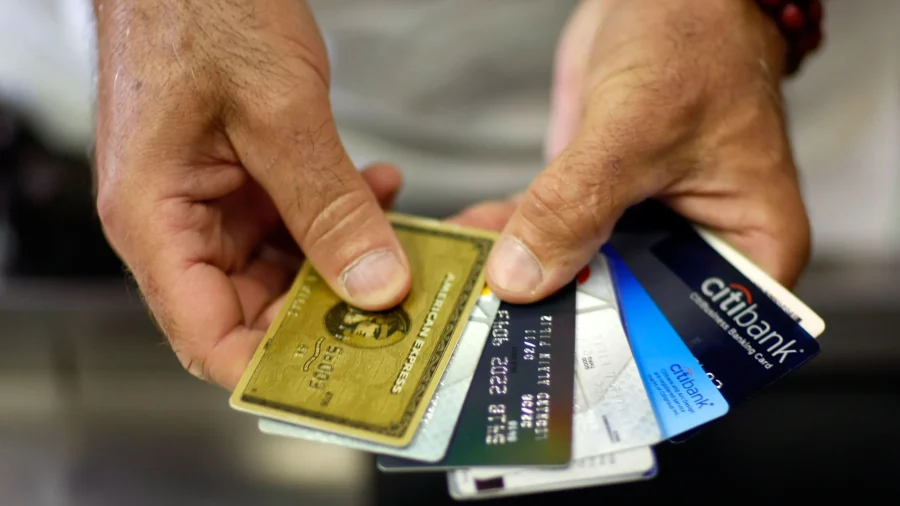Wallethub’s 2024 Credit Card Debt Study revealed Monday that 46 percent of U.S. credit card users are still paying off last summer’s charges, even as the amount charged on credit cards went up 4 percent over the same period in 2023.
About one-third of people surveyed predicted they would have more credit card debt by the end of 2024, and one in four say they are very stressed about their level of credit card debt.
Of those with outstanding credit card balances, 80 percent said paying them off was a high priority.
However, data from last year shows one major reason for the higher debt now.
When Bankrate looked at people’s summer vacation plans for 2023, they mainly fell into two categories: more than a third planned to go into debt for their vacation, while almost half said they would not be taking a vacation because they couldn’t afford it.
Current data suggests that some who took on debt for a relaxing vacation are paying for it with stress this year. The average household credit card balance was $10,479 at the end of the first quarter of 2024.
“U.S. consumers do want to pay off their credit card debt. They just can’t seem to get any momentum,” WalletHub editor John Kiernan said in an email statement. “Nearly 1 in 4 people claim to be ‘very stressed’ about what they owe. Yet around one-third of people expect to have more credit card debt by year’s end. At some point, something has to give. Let’s just hope it doesn’t topple the economy when it happens.”
U.S. Federal Reserve data reported on Monday that outstanding debt rose 5 percent during the first quarter of 2024 compared to the fourth quarter of 2023. This shows that U.S. consumers are responding to inflation in part by increasing their debt.
While inflation has cooled to much lower levels than were seen in the past few years, consumers are still feeling the pinch of higher prices, which have increased an average of nearly 20 percent since 2021.
If May 2024’s total credit card debt numbers had not been adjusted for inflation, they would have gone up 7 percent over last May rather than 4 percent, representing a new record.
WalletHub suggested some steps to take for those who find themselves deeper in debt than they were last year. Making a budget can help consumers rein in unnecessary expenses and follow through on paying off credit cards instead of using them more. Building an emergency fund helps people use cash to pay for unexpected expenses rather than take on additional debt, which often means using credit cards.
Other steps consumers can take are to pay off debts with higher interest rates first, look for a higher-paying job, or get a side hustle to pay off debt faster.
While a high debt-to-income ratio can lower a person’s credit score, it’s important to check credit reports periodically for inaccurate data that can result in higher interest rates for new and existing debt.
WalletHub reported that complaints about credit cards to the Consumer Financial Protection Bureau were up more than 43 percent over 2023. The CFPB also had a 280 percent increase in complaints about credit reporting.
The latest inflation numbers suggest that prices may be stabilizing, which is one signal that the Federal Reserve may cut interest rates in the near future. Morgan Stanley has predicted a rate cut in September, which could bring credit card interest rates back down at least a bit.

